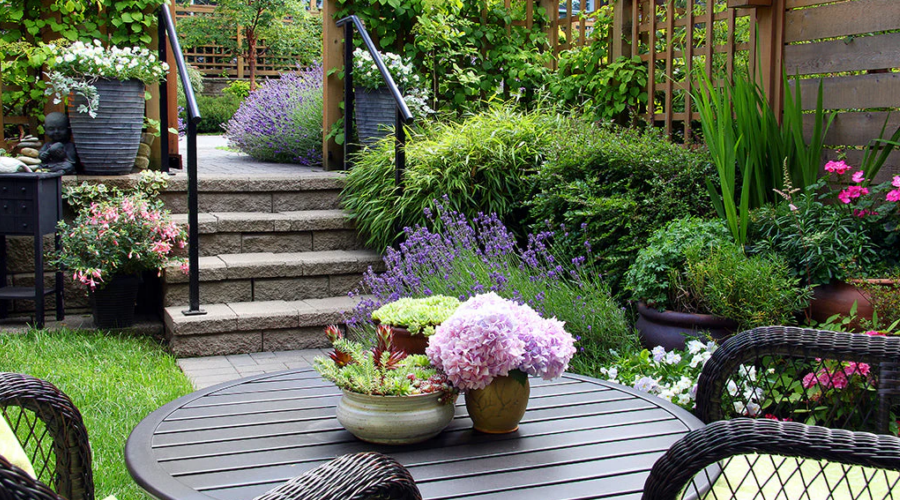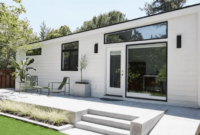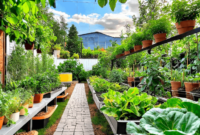A beautiful and thriving garden can be one of life’s greatest pleasures. It is a personal oasis, a place to connect with nature, and a beautiful extension of your home. However, the dream of a lush, vibrant outdoor space is often overshadowed by the fear of endless, back-breaking work. Many people believe that a stunning garden requires a constant commitment to weeding, watering, and pruning. This is why learning how to create a low-maintenance garden is such a popular goal.
The good news is that you can have a gorgeous garden without it becoming a full-time job. A “low-maintenance” garden is not a “no-maintenance” garden, but it is a smartly designed space that works in harmony with nature, not against it. It is about making a series of intelligent choices upfront that will save you countless hours of work in the long run.
This comprehensive guide will walk you through the essential principles and practical steps. We will show you how to create a low-maintenance garden that not only survives but thrives for years to come, giving you more time to actually sit back and enjoy it.
The Golden Rule: “Right Plant, Right Place”
This is the absolute, non-negotiable foundation of all successful, low-maintenance gardening. The vast majority of gardening frustrations come from trying to force a plant to grow in a place where it does not want to be. Fighting to keep a shade-loving hosta alive in the blistering afternoon sun is a recipe for failure.
Before you buy a single plant, you must become an expert on your own yard.
-
Track Your Sunlight: Spend a day observing how the sun moves across your property. Note which areas get 6+ hours of direct sun (“full sun”), which get 3-6 hours (“part sun/shade”), and which get less than 3 hours (“full shade”).
-
Understand Your Soil: Is your soil heavy and clay-like, or is it sandy and fast-draining? A simple “squeeze test” can give you a clue. You can also get a more detailed soil test from your local university cooperative extension service.
-
Know Your Hardiness Zone: You need to know your USDA Plant Hardiness Zone. This number tells you which plants can survive the winter temperatures in your specific region. You can easily find your zone on the official USDA Plant Hardiness Zone Map.
Choosing plants that are naturally suited to your specific conditions is the most important step in learning how to create a low-maintenance garden.
Embrace the Power of Native Plants
Native plants are the undisputed superstars of the low-maintenance landscape. These are the plants that have evolved in your local region for thousands of years. They are perfectly adapted to your climate, your soil, and your local wildlife.
Why Native Plants are a Smart Choice:
-
Drought-Tolerant: Once they are established, native plants are adapted to your local rainfall patterns. This means they will require far less supplemental watering than exotic plants.
-
Pest and Disease Resistant: They have developed natural defenses against the common pests and diseases in your area. This means you will spend less time and money on chemical treatments.
-
They Support the Ecosystem: They provide the essential food and habitat that local birds, bees, and butterflies need to survive.
Choose Perennials and Shrubs Over Annuals
Annuals are plants that provide a big, beautiful burst of color, but they only live for one season. This means you have to buy and replant them every single spring. Perennials, on the other hand, are plants that come back year after year.
While a perennial might not flower for as long as an annual, the long-term benefit is enormous. Planting a garden bed with a backbone of hardy perennials and woody shrubs means you do the hard work of planting once, and they will reward you with their beauty for years or even decades to come. This is a core principle of knowing how to create a low-maintenance garden.
Mulch is Your Best Friend
Mulch is the secret weapon of the savvy, low-maintenance gardener. Applying a two-to-three-inch layer of a good organic mulch (like shredded bark, wood chips, or pine straw) over your garden beds has three incredible benefits.
-
It Suppresses Weeds: A thick layer of mulch blocks the sunlight that weed seeds need to germinate. This will dramatically reduce the amount of time you spend on your hands and knees pulling weeds.
-
It Retains Soil Moisture: Mulch acts like a protective blanket for your soil. It slows down the evaporation of water, which means you will have to water your garden far less often.
-
It Builds Healthy Soil: As the organic mulch slowly decomposes, it adds valuable nutrients and organic matter to your soil, reducing the need for fertilizer.
Reduce or Eliminate Your Lawn
The single most high-maintenance element in the average yard is the traditional grass lawn. It demands a constant cycle of mowing, watering, fertilizing, and weeding. One of the most impactful ways to reduce your garden chores is to simply have less lawn.
-
Your Action Plan: Consider replacing sections of your lawn with expanded garden beds filled with low-maintenance native plants and shrubs. You can also use beautiful, walkable ground covers like creeping thyme. Or, you could create a hardscaped patio area for outdoor living. This strategy is also a key component of building a more valuable property. For more on this, we recommend [Our Complete Guide to Easy Home Makeover Ideas to Boost Property Value].
Plant in Groups and Drifts
A common beginner mistake is to plant one of this and one of that, creating a polka-dot effect. A more professional and lower-maintenance approach is to plant in groups.
-
How It Works: Instead of a single plant, you should plant a group of three, five, or seven of the same plant together. This creates a bold, intentional “drift” of color and texture.
-
Why It’s Low-Maintenance: A dense planting of a single species will quickly fill in and shade the ground, which naturally helps to outcompete and suppress weeds.
Install a Drip Irrigation System
While it requires an upfront investment, a drip irrigation system or a soaker hose system will save you a huge amount of time and water in the long run.
-
How It Works: These systems deliver water slowly and directly to the base of your plants, right at the root zone.
-
Why It’s a Smart Choice: This method is far more efficient than a traditional sprinkler, which can lose up to 50% of its water to evaporation. It also keeps the foliage of your plants dry, which helps to prevent common fungal diseases.
Conclusion: A Garden That Gives Back
Learning how to create a low-maintenance garden is not about finding a magical, no-work plant. It is about creating a smart, resilient, and self-sufficient ecosystem.
By making intelligent choices from the very beginning—by choosing the right plants for your space, by embracing the power of mulch, and by designing with intention—you can build a stunning outdoor oasis. You can have a garden that is a source of joy and relaxation, not a source of endless chores.
You can also read more article – Best Gardening Hacks for a Thriving Backyard Oasis




